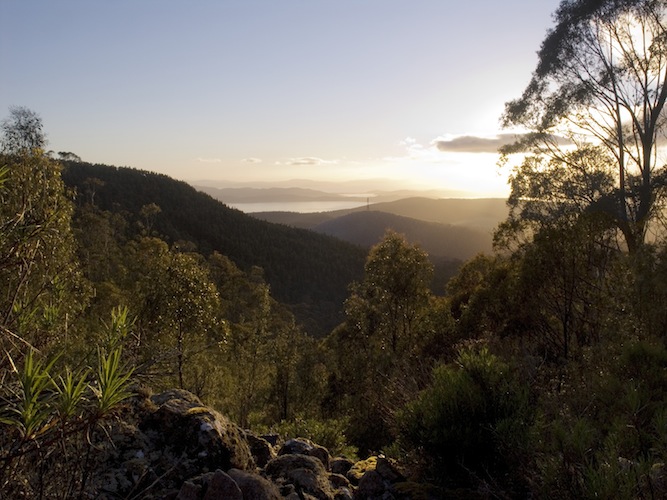The loss of biodiversity is the most potentially devastating outcome of carbon pollution by humans. Australians have lived for two long by the outmoded mindset that says we can manage without other species. We must do more to keep what natural diversity we have left. [7 September 2010 | Peter Boyer]
Any man’s death diminishes me, because I am involved in mankind, and therefore never send to know for whom the bell tolls; it tolls for thee.—John Donne (1623), Meditation 17, Devotions upon emergent occasions
Nowadays everything has its special day or year, so you may not want to know that today is National Threatened Species Day and 2010 is the International Year of Biodiversity. But before you wander off, give a thought to what we humans have to lose from the disappearance of other species.
We need other species: not just the big ones like kangaroos and whales and trees, but also spiders and insects, grasses and seaweed, fungi, bacteria and all the myriad life forms inhabiting Earth. A key measure of the health of an ecosystem is the number of species it contains.
Biodiversity is our life support system. Besides its limitless possibilities for food and medicine, it recyles oxygen, nitrogen and carbon, protects us from climatic extremes, reduces pollution, protects waterways and counters soil erosion, among other things.
All of Earth’s life forms face the prospect of extinction, but every so often there’s a big event resulting in the loss of most animal and plant species. We’ve identified five such events in the distant past, separated by many millions of years. The last of these was 65 million years ago.
But today’s high and growing rate of species loss — many times the background average — has led scientists to the view that Earth is now undergoing its sixth mass extinction, and because human activity is the principal cause, they’ve called it the Anthropocene.
For centuries, extinctions have been triggered by invasive species and destruction of habitats to make way for agriculture, and more recently by industrial pollution. But of all these weapons of mass destruction, today’s human-induced climate change is proving the most devastating.
Around the world, a shifting climate is putting natural systems under stress. For instance, warming, drying climates in parts of Eurasia and North America are weakening trees’ defences against pest attack, bringing death to vast areas of forest, while acidifying oceans caused by increased atmospheric carbon dioxide are affecting countless marine species.
Australia is in the global biodiversity spotlight. We’re one of a dozen “megadiverse” countries in the world — places that carry an unusual proportion of Earth’s biological wealth — and the only one of these countries that’s rich and developed enough to look after its diversity.
But there’s another side to Australia’s global status. Since Europeans settled here 222 years ago we’ve earned the dubious distinction of having the highest rate of mammal extinction in the world, nearly 40 per cent of the global total.
Like the rest of Australia, Tasmania has a high natural diversity by world standards, including many species found nowhere else. Its southerly maritime location and mountainous topography may help it avoid the climate extremes likely to be felt in mainland Australia, but there are signs that many of our unique species are stressed by changing climate.
Vulnerability of Tasmania’s Natural Environment to Climate Change, released last week, is a timely Tasmanian government assessment of how our land and marine species might cope in coming decades as a changing climate exacerbates current stresses on ecosystems.
Ecosystems around lakes, rivers and wetlands will be strongly affected by rising temperature, changing rainfall intensity and vegetation cover, and more frequent, more intense fires and windstorms. Fire will also pose an increasing threat to alpine, moorland and peatland ecosystems, which would release more carbon to the atmosphere.
An invasion of northern marine species caused by the Southern Hemisphere’s strongest ocean warming off eastern Tasmania is already starting to displace native species and devastating coastal habitats. Cold-water natives like the Tasmanian rock lobster have nowhere to go but extinction.
The report makes clear that we will continue to lose species for many decades to come. But like the rest of Australia, Tasmania has a responsibility to do all it can to minimise the damage, and this needs the support of all of us, government and citizen alike.
As with all measures to reduce our human footprint, we can profit from protecting biodiversity. Dr Cristian Samper of Washington’s Smithsonian Institution believes that our agricultural sector, instead of spending billions on pest eradication, can use biodiversity to everyone’s advantage.
Agriculture is a key to retaining natural diversity. Over the past 50 years human population and consumption pressures have dramatically increased our footprint on the planet, destroying about a quarter of the world’s terrestrial ecosystems.
In a visit to Australia last week Samper put the case for getting to know how plants survive and thrive by means of natural systems, using fungal species living in their tissues to resist pests and diseases. Application of natural solutions, the result of millions of years of trial and error, offers us a much more resilient path to food productivity than endless pesticide regimes.
A decade ago, Australia’s landmark Environment Protection and Biodiversity Conservation Act gave some cause for hope in the battle for biodiversity. Then at the 2002 Johannesburg Sustainable Development Summit the world’s nations set a 2010 target to stop biodiversity loss.
Since then the UK, the US and New Zealand, among other countries, have implemented plans that have helped to slow down the loss of species, but Australia’s extinction rate has gathered pace. If this is the price we pay for an economic success that’s the envy of the world, we have to ask, is it worth it?

